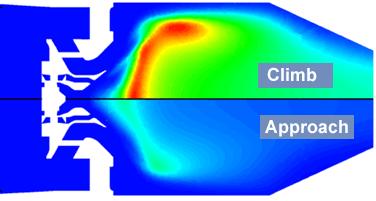Environment
Leading Edge Research Tracks Down NOx in Aeronautics
ONERA obtains the means to predict the production of emissions in future aeronautical combustion chambers.
06 March 2013
European directives issued by the Advisory Council for Aeronautics Research in Europe [Acare] set the bar very high in terms of reducing polluting emissions in engine output: reductions of 50% for CO2 and 80% for nitrogen oxides (NOx) by 2020. Predicting these emissions is extremely complex, partly because the production mechanisms involve various scientific disciplines: chemistry, thermodynamics, fluid mechanics, etc.
Faced with this challenge, ONERA has implemented the multi-disciplinary project Cleaner, whose purpose is to allow a very realistic simulation of polluting emissions in future aeronautical combustion chambers. Cleaner relies on the Onera software Cedre, which is a reference for ONERA’s partners.
The results of the first models obtained in early 2012 agree very well with the experimental data for several operating points (from the climb to the approach). This interesting result is an additional step in the validation of combustion theoretical models developed at ONERA.

NO mass fractions for the "Climb" and "Approach" regimes of a TLC combustion chamber (lean premix) designed to reduce nitrogen oxide emissions.